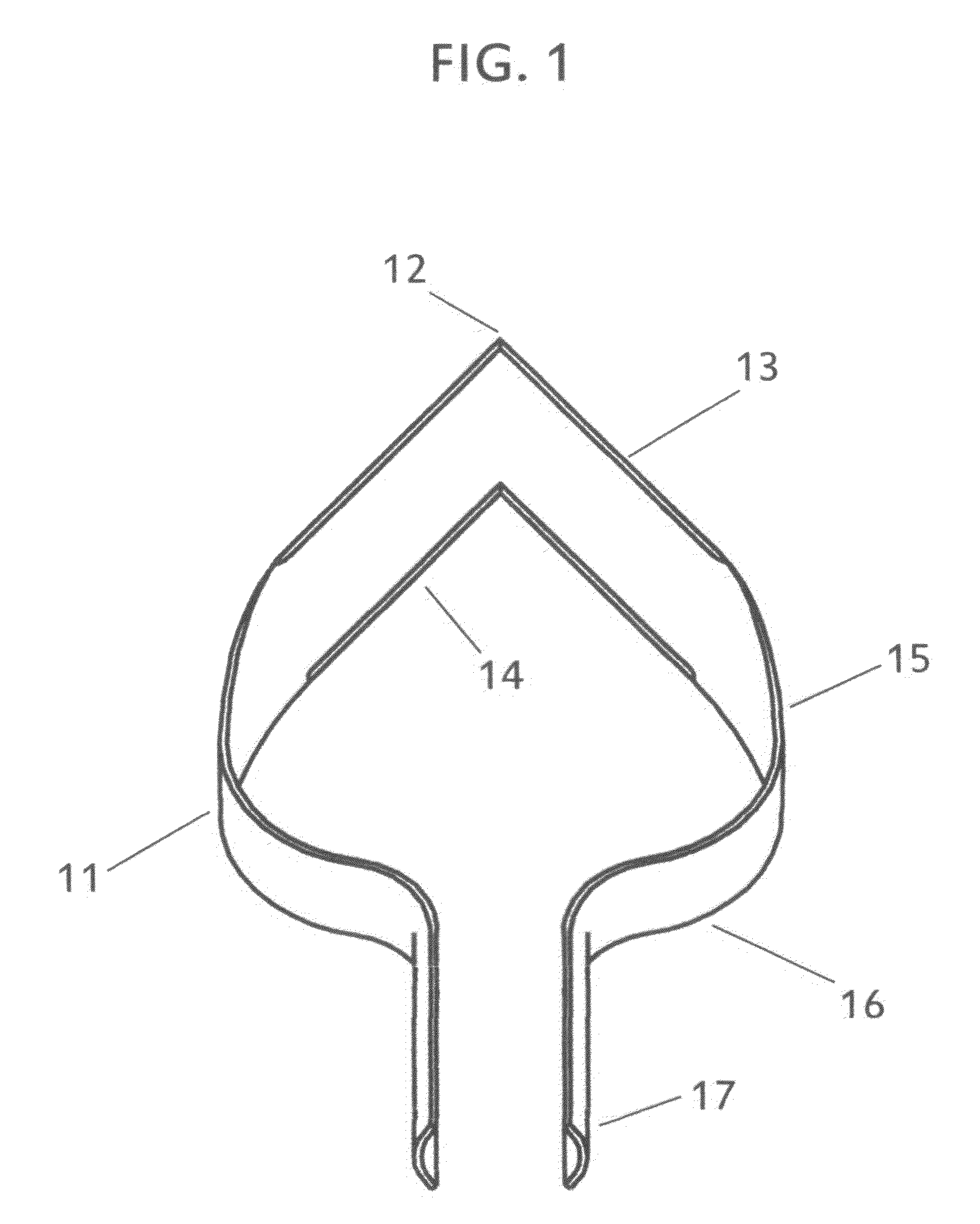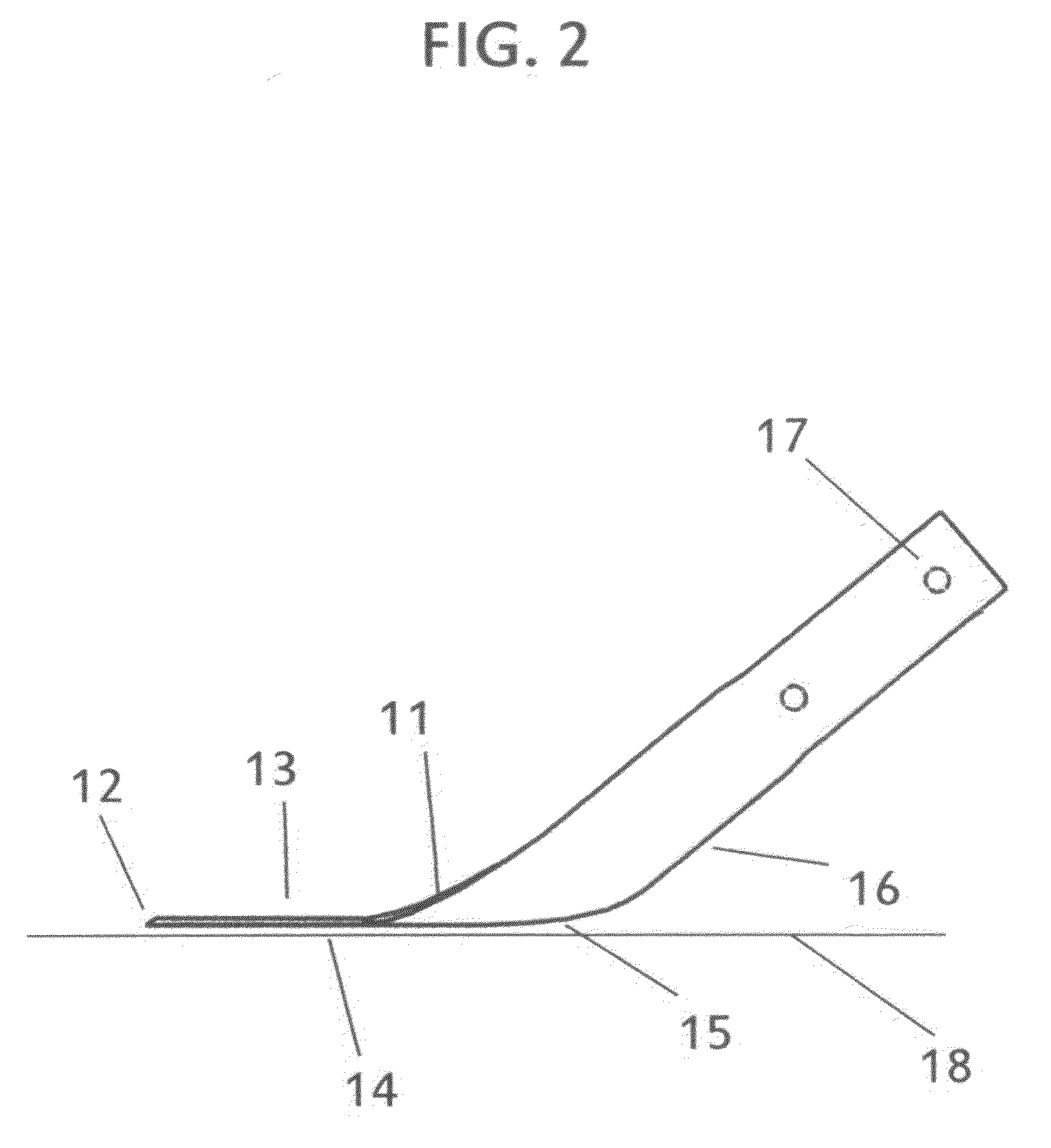Optimized scuffle hoe, multi-purpose garden tool
a multi-purpose, scuffle hoe technology, applied in the field of gardening and landscaping, can solve the problems of limited design of scuffle hoe, limited scuffle hoe, laborious and sometimes painful task of weeding, etc., and achieve the effect of rewarding and enjoying
- Summary
- Abstract
- Description
- Claims
- Application Information
AI Technical Summary
Benefits of technology
Problems solved by technology
Method used
Image
Examples
Embodiment Construction
—FIGS. 1, 2,3,4—PREFERRED EMBODIMENT
[0028]FIG. 1 comprises an aerial view of the head portion 11 constructed in accordance with the invention. The forward portion 12 is in a V-shape or curved with outer blades 13, and inner blades 14. These may be sharpened, or merely thinned to facilitate a cutting or leveling action when this embodiment is pushed or pulled along the ground. The strip of metal comprising the head portion 11 curves in such a way 15 to ensure materials passing through the open portion of the embodiment are distributed evenly. Above the curve, a flat section 16 may be included where the user's foot may be placed for added force, if needed. The head portion 11 is fastened to the handle portion 18, which may be employed with bolts 17 or other methods befitting high standards of construction.
[0029]FIG. 2 comprises a perspective left-side view of the head portion 11 and handle portion 18. This view shows the probable angle from the ground level 19 during normal standing u...
PUM
 Login to View More
Login to View More Abstract
Description
Claims
Application Information
 Login to View More
Login to View More - R&D
- Intellectual Property
- Life Sciences
- Materials
- Tech Scout
- Unparalleled Data Quality
- Higher Quality Content
- 60% Fewer Hallucinations
Browse by: Latest US Patents, China's latest patents, Technical Efficacy Thesaurus, Application Domain, Technology Topic, Popular Technical Reports.
© 2025 PatSnap. All rights reserved.Legal|Privacy policy|Modern Slavery Act Transparency Statement|Sitemap|About US| Contact US: help@patsnap.com



